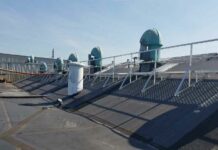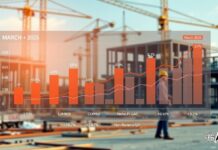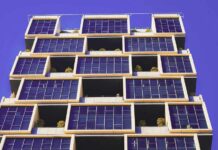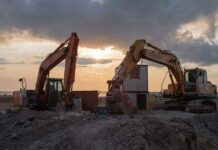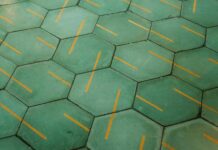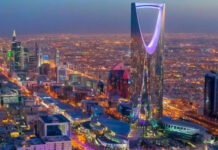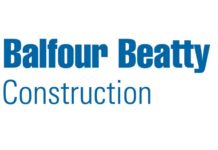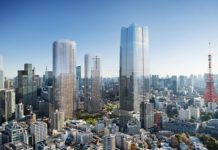When it comes to any form of construction, the windows are often the final piece that completes the exterior of the building. As we noted in our post Windows of the Future, glass technology is constantly evolving. One type of glass that is becoming increasingly popular is curved glass. This type of glass has become a symbol of cutting-edge architecture, fusing aesthetics with innovation. Whether gracing the facade of a contemporary museum or wrapping around a luxury hotel, curved glass adds a sense of fluidity and modern elegance that flat panels simply can’t match. But behind every seamless wave of glass lies a complex, multi-phase process—from conceptual sketches to the final installation. This article takes you through the full lifecycle of a curved glass facade, exploring the key stages that bring these sophisticated architectural features to life.
1. The Vision: Architectural Design and Planning
The journey of a curved glass facade begins in the conceptual design phase. Architects envision the role the curved glass will play—will it soften the building’s form, reflect surrounding scenery, or create an immersive light-filled space?
Design Considerations
Architects must balance artistic ambition with engineering feasibility. Some of the main considerations at this stage include:
- Radius of curvature: Tighter curves require more complex fabrication.
- Panel size: Larger panes can minimize seams but pose transport and handling challenges.
- Performance: Glass must meet energy efficiency, safety, and acoustical standards.
Collaboration is key at this point. Architects often work closely with structural engineers and facade consultants to determine whether the design is viable. Digital tools like Building Information Modeling (BIM) and parametric modeling help test different forms and structural behavior.
2. Engineering and Structural Analysis
Once the conceptual design is approved, structural engineers step in to ensure the curved facade can withstand real-world forces, such as wind loads, thermal expansion, and seismic activity.
Glass Types and Structural Support
There are two primary types of curved glass used:
- Hot-bent glass: Heated in a furnace until pliable, then shaped over a mold.
- Cold-bent glass: Flat glass panels are gently bent into a frame on-site, often using minimal curvature.
The support system also varies. Curved glass may be:
- Self-supporting, in which the glass is laminated and structurally bonded
- Supported by steel or aluminum framing systems, offering extra rigidity
The choice of support impacts not only appearance but also cost, safety, and energy performance.
3. Glass Manufacturing: From Flat to Fluid
The manufacturing stage is where flat sheets of glass are transformed into stunning curved forms. It is a complicated process, which is why Flickinger Glassworks calls the creation of a curved window “a delicate dance between precision and creativity”. As per the curved glass experts, it all begins with selecting the finest quality glass for its clarity and strength. Each curve must then match design specs within tight tolerances.
Hot Bending Process
In hot bending, the glass is:
- Heated to ~600–700°C in a bending furnace
- Molded over a custom form
- Cooled slowly to prevent stress fractures (annealing)
This method is ideal for complex or compound curves and ensures optical clarity and durability.
Cold Bending Process
In cold bending, a flat panel is forced into shape within its frame, typically during installation. It’s faster and less expensive than hot bending, but it’s suitable only for large-radius curves and when optical distortion is acceptable.
Lamination and Coatings
After bending, glass panels are often laminated (two or more layers bonded with a plastic interlayer) for safety.
They may also receive:
- Low-E coatings for energy efficiency
- Tinting or fritting for solar control or design
4. Logistics and Transportation
Curved glass panels are fragile, bulky, and expensive, making transportation a crucial phase. Logistics teams coordinate shipping routes, packaging materials, and handling techniques to ensure safe delivery from the factory to the job site.
Handling Challenges
- Custom crates are built to protect edges and maintain curvature.
- Cranes or vacuum lifters are used for unloading.
- Temperature fluctuations during transport are also considered, as thermal shock can damage improperly handled glass.
5. On-Site Installation
With the glass panels on-site, the focus shifts to installation. It’s a process that demands careful coordination between glass installers, facade engineers, and construction crews.
Precision Mounting
Installation begins with anchoring the support system—typically a curtain wall frame or custom mounting structure. Each glass panel must:
- Be lifted and aligned without flexing or cracking
- Fit seamlessly into pre-fabricated mounts
- Maintain weatherproofing via gaskets, sealants, or glazing systems
In cold-bent projects, bending may happen on-site as the panel is placed into a specially designed frame.
Quality Assurance
Before final sign-off, teams inspect:
- Alignment and curvature accuracy
- Seal integrity (to prevent air or water leaks)
- Optical distortion or surface defects
6. Post-Installation: Maintenance and Performance
The lifecycle of a curved glass facade doesn’t end at installation. Long-term performance is a vital consideration for owners and facility managers.
Cleaning and Maintenance
Curved surfaces can trap dirt or water differently than flat glass. Buildings often use:
- Automated cleaning systems for high facades
- Hydrophobic coatings to repel moisture and reduce streaking
Thermal and Acoustic Monitoring
Sensors may be embedded to monitor:
- Temperature changes within the glass cavity
- Acoustic insulation performance
- Structural movement over time
Proper maintenance ensures the facade retains its transparency, safety, and thermal performance for decades.
7. Iconic Examples: Famous Curved Glass Facades Around the World
Curved glass has graced some of the world’s most iconic buildings, setting benchmarks for design and innovation. One standout example is the Apple Park campus in Cupertino, where 3,000 curved glass panels create a continuous ring around the headquarters, making it one of the largest curved glass structures ever built. In London, Harvard Design Magazine details how 30 St Mary Axe—popularly known as The Gherkin—features a distinctive curved glass exterior that enhances natural ventilation and minimizes solar gain. Meanwhile, the Louis Vuitton Foundation in Paris, designed by Frank Gehry, showcases sweeping glass “sails” that demonstrate the artistic potential of curved glazing. These buildings don’t just reflect technical mastery—they represent how curved glass can elevate architecture into sculpture.
Conclusion: Art Meets Engineering
Curved glass facades represent the perfect union of art, engineering, and technology. From the architect’s pen to the final panel locked into place, every phase of the process requires precision, coordination, and expertise. As more designers push the boundaries of form and function, curved glass continues to reshape skylines—one smooth, shimmering curve at a time.




